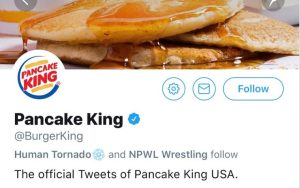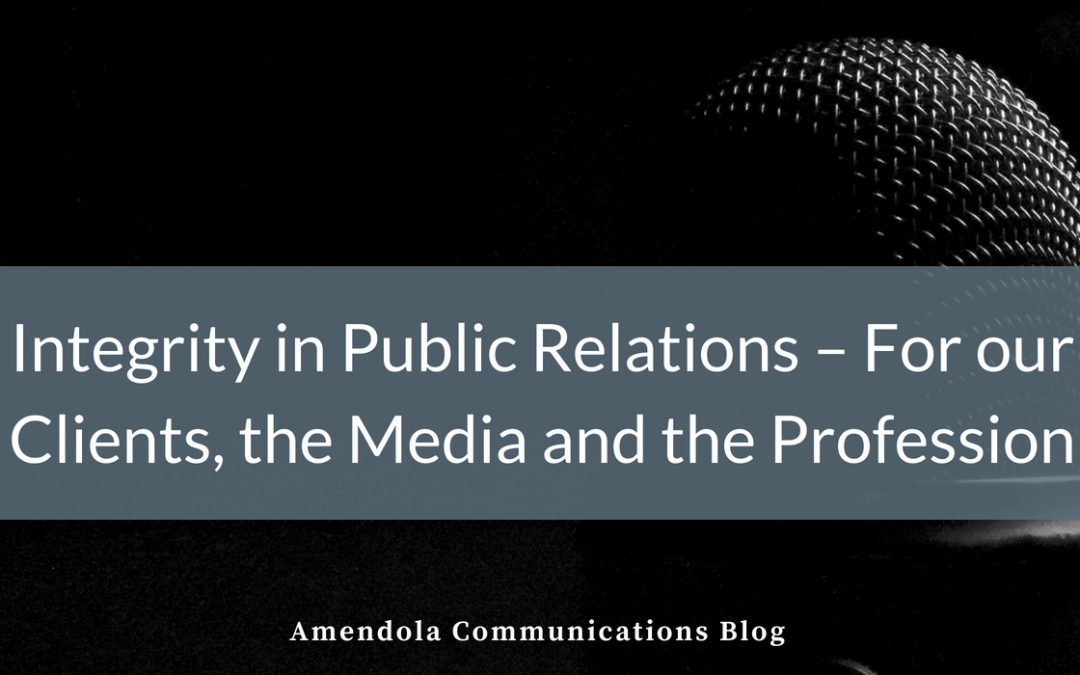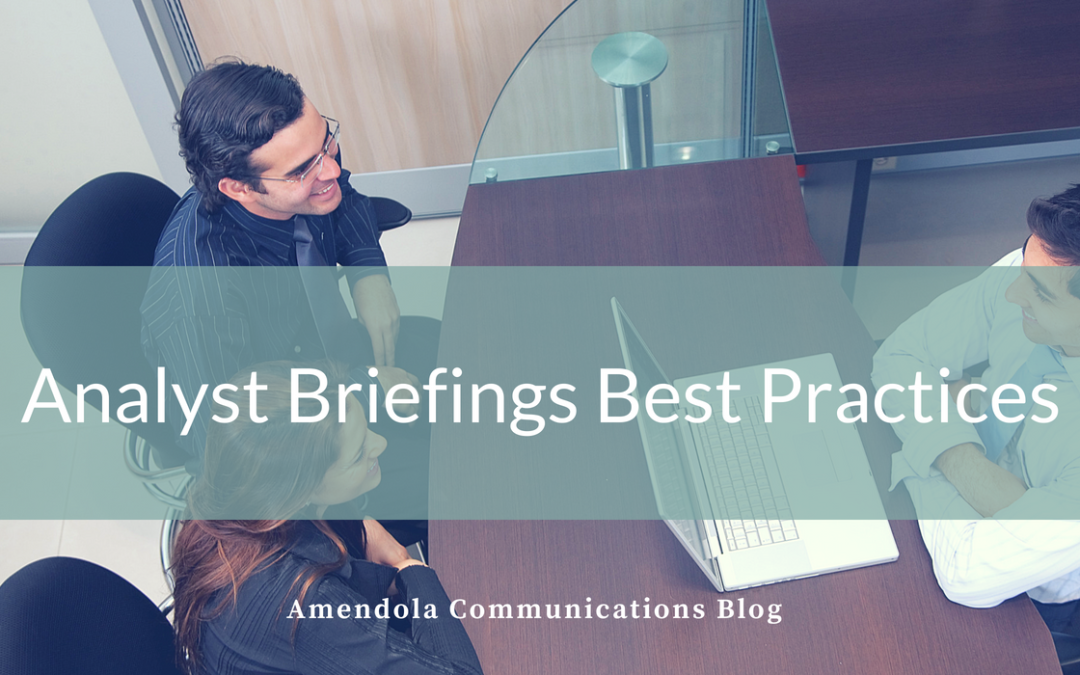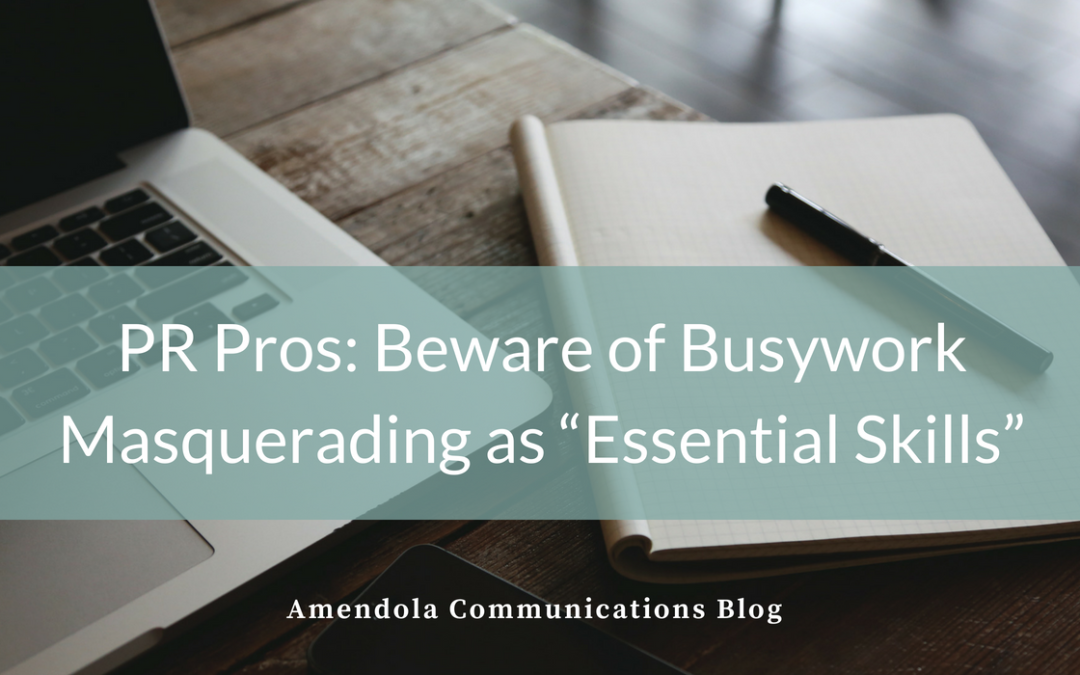
by Ken Terry | Jun 27, 2018 | Blog
Pitching stories is one of the essential skills of a PR professional. Yet it is surprising how many PR people neglect the basics of how to pitch what to whom. In most cases, a little thought and preparation can help PR pros avoid these kinds of mistakes. Yet they continue to be made on a regular basis, as any working journalist or editor can attest. Here are some common pitching errors and how to prevent them.
- Doesn’t know the publication. When a busy editor gets a pitch from a PR person who doesn’t know his or her publication, it’s an immediate turnoff. The pitch might be for a consumer story when it’s a business or trade publication, or the story might concern a sector of the industry other than the one that the magazine or website covers. In either case, the editor is unlikely to consider the pitch and will probably delete future emails from that publicist. To prevent this error, all you have to do is read sample articles in the publication or just glance at its home page.
- Doesn’t know the publication’s editorial policies. Even among trade publications, there is a wide range of different policies on how guest columns and news stories should be written. Some publications will not allow any mention of a client’s name or products. Others actively solicit promotional pieces (usually in exchange for ads), and there are variations in between those poles. The publications that take a strict stance against product promotion are more desirable for thought leadership, but some clients may want placement in publications that allow a mention of how their products helped their customers. The important thing is to know a publication’s editorial policies before pitching its editors. Usually, those policies are on its website. A PR firm should also ensure its writers follow these rules; if not, the publication may reject the piece.
- Doesn’t understand the publication’s slant. Depending on its audience, a publication might be looking for very specific kinds of stories and opinion pieces that cater to its readers interests. For example, a publication for CISOs will be receptive to pieces that focus narrowly on security but not on topics of general interest to CIOs, even though CIOs are also concerned about security. The editor will also look for trendy topics in that field, such as blockchain’s potential use in security. But if the publication has covered something frequently in the recent past, such as how to foil ransomware attacks, it may not be interested in that. To prepare for this possibility, do a keyword search in the publication’s archives or on Google.
- Doesn’t keep up with changes in direction. Some publications change their editorial direction, either because of a change in leadership or in response to market forces. Publicists should not assume that because a publication accepted certain kinds of pitches in the past, they will in the future. Keep up with what’s happening with key publications by reading them regularly, and also take note of personnel changes. When a new editor or journalist joins the publication, introduce yourself and ask what kinds of stories that person is looking for.
- Doesn’t pitch stories in a timely way. In the competitive field of journalism, timing is extremely important. If you pitch a news-related story too late, it will be rejected because no one is interested in that topic anymore. If a client has an important news story, it’s always a good idea to give key editors the news just ahead of its release on an embargoed basis. But don’t provide the release to just one editor, or the others will feel slighted and will remember that the next time you pitch them.
- Fails to present the pitch concisely and intelligibly. Any PR professional should know how to write a good pitch, but it is surprising how many emailed pitches fail that test. In some cases, they go on interminably before getting to the point. Other pitches are so poorly written that they’re difficult to understand. You should always remember that editors time is limited and that they may have to read hundreds of emails each day. Just as in a published article, a catchy headline and a cogent lead will go a long way toward getting an editor’s or journalist’s attention.
None of these mistakes are difficult to correct. With a fairly minimal effort, publicists can learn what publications want and how to deliver it. By doing so, they can vastly increase their chances of having their pitches accepted and of placing articles in sought-after publications.

by Erik Yorke | Jun 20, 2018 | Blog
If you spend any time on the Internet not exclusively dedicated to work, shopping or seeing what new shame Cousin Frank is bringing to your family on Facebook, you understand that the Internet’s true purpose is to facilitate a relentless parade of jokes, memes and reaction videos related to anything and everything going on in the world.
So if you’re a beloved brand trying to navigate this ocean of hot takes, dry bon mots and raunchy non sequiturs do you A) be very careful so as not to become instant joke-fodder, or do you B) hit the gas and drive right into the lion’s den of Twitter comedians and smug Photoshoppers? Well IHOP was willing to take that risk and it looks like it’s paying off.
IHOP, which most of us will remember from our 20s, decided to play fast and loose with its deeply rooted brand, changing its name (temporarily) to IHOB in order to draw attention to a promotion around its new burger menu. The breakfast giant, loved deeply by both syrup-addicted toddlers and exhausted college students in need of a 3 a.m. carbo load and every hilariously specific demographic in between, made the bold choice to proclaim “We are a burger joint now!” Did this get made fun of? You know it did.


These are just a couple of the jokes. But in activating this promotion, IHOP had to have known what it was in for. If you take a look on Twitter, one very common quip by the millions of self-styled witticists is “Oh, yeah, when I think of a great burger, I think IHOP,” the late 90s favorite “NOT!” is, of course, implied.
But, guess what funny peeps? That was the point! Did you suddenly find your mouth forming the words “IHOP” and “burger” in the same sentence? I’m guessing that a profitable percentage of people out there poking fun at the Pancake House are going to, at some point this summer, give one of those new burgers a try.
IHOP’s gambit has a lot of people talking about them and their own competitors took the bait and are using their resources to talk about the promotion. Sure, they get their jokes in, but they’re also strapping a jetpack to IHOP’s message and blasting it into burger-loving faces by the thousands. It’s a great example of using a little creative thinking to drive your brand awareness.
Do the Tweets, Grams and quill-written letters on parchment decrying this name change hurt IHOP’s feelings (or brand)? I’m guessing no; if the stunt sells burgers, they won’t mind at all, and once the promotion ends, people still enjoy pancakes and will continue to do so, internationally.
So what’s the lesson? Maybe we shouldn’t treat our brands like sacred idols and, instead, understand that people on the Internet are going to make fun of us no matter what. IHOP understands that if they’re in on the joke, they can have the last laugh.

by Linda Healan | Jun 13, 2018 | Blog
Recently, I heard someone speak about Integrity and the importance of having it in all aspects of your life. It might sound like a simple concept, but when someone, especially someone in a leadership or advisory role, doesn’t apply integrity in their life, there seems to be a great deal of fall-out. And let’s face it: it can be news-making in the worst conceivable way.
Integrity is “a firm adherence to a code of especially moral or ethical values; soundness of character; honesty or a state of being whole.” Another definition is a “concept of consistency of actions, values, methods, measures, principles, expectations, and outcomes.” I like to define it as always doing the right thing when nobody is looking.
I began thinking about how essential integrity is in business and certainly as a part of public relations. When we as PR people are responsible for building our clients brands and reputations, integrity is most certainly an important attribute. To support this belief, the Public Relations Society of America (PRSA) has developed a Code of Ethics as part of its commitment to integrity and expects its members to adhere to this Code.
There are many examples of how important integrity can be in public relations. Here are just a few examples of where I find integrity to be especially critical:
With our clients
It is our role as PR practitioners to advocate on behalf of our clients and advise them on what is in their best interests. Sometimes those interests contradict what we know to be right or perhaps goes against our own best business interests. This is where integrity is essential.
PR practitioners tend to be people pleasers. We want to make our clients happy. However, our clients engage us to provide more than just a service, they retain us as advisors who get results. Sometimes saying “No” and explaining why a client request is not in their best interest is part of our role.
With the media
I have heard two theories throughout my career. The first was “He who has the gold, makes the rules.” The other was, “Clients change. It’s your relationship with the media that you need to hold sacred.” I personally adhere to the second theory.
Don’t misunderstand, I truly value my clients; but they generally hire me because I can obtain coverage for them in the press. Honesty, providing accurate information, meeting deadlines, and pitching appropriate information to the press is the foundation for a great relationship with the media. What good am I to any client (present or future) if I have burned a bridge with one of the key healthcare editors at a tier one publication because I conducted myself unethically or if I have a reputation for supporting fake news?
Within our profession
Of course, we should treat each other with fairness, respect and pursue honest competition. Unfortunately, that is not always the case. As we seek to impress clients, build new business and grow profits, it is sometimes too easy to drift away from doing the right thing.
I could share multiple examples of backstabbing, bad-mouthing, and undermining colleagues that I have witnessed throughout my career. But more frequently, I get to see colleagues supporting each other, providing meaningful honest feedback, helping peers to grow and learn new skills, and working as a team towards success and to support our clients communications goals.
There is a truth in six degrees of separation. It is a big, wide world, but the PR community can be small, and reputations follow us. At the end of the day, all we have is our reputations which rely heavily on the integrity we exhibit consistently.
In the time that I have been with Amendola Communications, I have seen the highest levels of integrity demonstrated from management, to the account teams and with the administrative staff. Not only are my colleagues extremely knowledgeable and talented, but they consistently work in the best interests and to the highest standards for our clients, our media contacts, with each other, and the profession as a whole. I’m pleased to say that I work in an environment where complete integrity is one of the agency’s four key principles.
The trust of clients, colleagues, the public, the media and the wider community is fundamental in maintaining a positive reputation in the PR industry. The subject of integrity might not seem the most interesting of topics, but it’s often misunderstood and something that we could all give more thought to.

by Matt Schlossberg | Jun 6, 2018 | Blog
Earned media bylines and interviews get the most attention in healthcare public relations programs, but in many ways analyst briefings are even more critical to companies navigating a noisy and fiercely competitive marketplace.
Admittedly, analyst reports don’t have the curb appeal of a slick vendor profile in a top-drawer health IT publication. But they make up for it in other ways.
Many of your potential customers use the reports generated by KLAS Research, Gartner, AITE Group, The Advisory Board and others to evaluate vendors and solutions; better understand emerging healthcare categories, such as artificial intelligence and blockchain, and how they are defined; and leverage the valuable primary and secondary research to make technology investment decisions.
Analyst reports are also beneficial to vendors. They can be invaluable for testing market positioning, providing clarity on where a given solution type is on the hype cycle, and how close competitors are responding to the ebb and flow of market trends.
If your PR executives are good, they are already researching all of the healthcare-specific analyst firms and many of the cross-industry outfits and scheduling briefings. If they are smart, they are helping you prepare to make the most of this opportunity.
This post will assume that your PR firm has secured an analyst briefing and is helping you with strategy and tactics to maximize your opportunity. (If my assumption is wrong, let me know).
Phase 1 Preparation
A good PR firm is going to provide solid guidance on analyst firms to pursue. The 500-pound gorillas like IDC and Gartner seem like no-brainers, but smaller firms that specialize in specific areas of healthcare can be just as valuable. (Long-time Amendola client Health Catalyst has a terrific breakdown of most of the major healthcare and cross-industry firms.)
Once a briefing has been secured, it’s time to prepare even if the briefing is several week or months out. Preparation for analyst briefings can be resource- and time-intensive.
A media interview may run 15 to 20 minutes and be handled in-person or on the phone. Analyst briefings can last an hour if not more and often involve prepared slide decks, input from multiple executives, a demonstration of the solution or platform, the willingness to provide detailed answers to questions about your company’s history, competitors and financials.
Your PR executive should have a detailed understanding of what the analyst wants from this briefing, then help you edit and shape the presentation to align with those needs.
Phase 2 Who’s Invited
Many analyst briefings veer off in the wrong direction because the company hasn’t invited enough people or simply too many.
We recommend that unless directed by the analyst, no more than three company representatives join the call. Those people should include the CEO, who can provide company positioning and higher-level commentary; the Chief Product/Solutions Executive, who can provide detailed information regarding the solution or platform; and the Marketing Executive, who can ably describe market positioning, customer outreach and information regarding competitors.
Of course, other company representatives are free to join, but they should quickly introduce themselves, then place themselves on mute for the duration of the call. The goal of this briefing is to provide the analyst will a smooth, clear, coherent narrative about your company. That can’t happen with people talking over each other, drawing the conversation down a half-dozen blind alleys, and random background noise intrusions.
Phase 3 The Slide Deck & Demo
Sometimes, companies are tempted to throw the kitchen sink at the analyst, covering every conceivable base from every conceivable angle. The intention is good, but attempting to cover everything since the Big Bang drowns the potential for telling a compelling story.
We encourage our clients to keep slide decks and demos short. Not more than 10-15 slides and a demo lasting no more than 10 minutes. You want to explore the details, not get bogged down in them.
As such, your slide deck should address your company’s most important competitive differentiators; provide a brief history of your company and a brief overview of its most relevant products; and offer compelling, results-oriented client success stories.
Ancillary information that may provide helpful context can be delivered to the analyst pre- or post-briefing, for them to peruse on their own time.
Phase 4 The Presentation
About a week before the briefing, we recommend a dry run. For this exercise, your PR executive and an internal communications manager should stand in for the analyst. Run through the briefing. Here are some useful metrics to judge by:
- How long did the briefing take? Ideally, you should have left a generous space at least 15 percent to 20 percent of the allotted time for questions and conversation.
- Did the subject-matter experts talk over each other or contradict each other? Were their responses thoughtful without also being epic monologues? Were their answers transparent and sincere, or riddled with meaningless jargon?
- How was the flow of the presentation? Did anything feel missing, superfluous or out of place?
- Did the presentation hit on all the agreed upon value propositions?
- Did you finish with case studies and proof points?
Phase 5 Stick the Landing
After your main presentation is done, the analyst will likely have final questions. This is a key intelligence-gathering opportunity for companies. Unlike media interviews, where the questions go in only one direction, analyst briefings allow for more back and forth.
This is a good time to test your assumptions and theories about your positioning in the market or mine valuable insights from an analyst well-versed in your area of healthcare.
Also be sure to leave your analyst with some takeaways case studies, white papers and blog posts that will provide additional context to the presentation.
Analyst briefings require a lot of preparation, but done correctly, they can be invaluable sources of information about your market and a rich source of customer prospects.

by Marcia Rhodes | May 30, 2018 | Blog
When it comes to HIMSS Global Conference speaker proposals, Amendola Communications enjoys a 75% win rate. That means that out of 12 speaking abstracts we write and submit on behalf of our clients, nine are accepted.
Quite impressive considering that HIMSS has a less than 30% acceptance rate. In fact, for HIMSS18, 742 proposals were received and only 224 were accepted, which means 518 were declined.
The process is not easy and takes anywhere from 12-16 hours per proposal. If only clients would invest the same time and energy in preparing their presentations! If clients were willing to carve out time for presentation training or coaching before they get up on the stage, here is what I would suggest.
Grab attention. High tech need not be dry tech. Instead of diving right into your presentation, open with a bang with one or more of the following:
- Startling statistic or statement
- Rhetorical question
- Historical analogy or example
- Quotation
- Personal anecdote
- Something specific to your audience
- Something to make audience feel good about themselves
- Promise
- Meme
- Short story (see example below)
- Headline from today’s newspaper (show newspaper)
For this last one, I am quoted in the book Presentations for Dummies (as Marcia Lemmons, my former married name) sharing this very tip. I first saw it used by a business development director at Accenture where I worked in the 90’s. The biz dev director would begin his presentation by holding up a fresh copy of USA Today or the Wall Street Journal. He would point to a headline and find a clever way to tie it to his presentation. This had the effect of making his presentation more current, relevant and way more interesting.
Short stories can be impactful if you can deliver them in 30 seconds or less. I saw this technique used very effectively by a Six Sigma Master Black Belt who would tell “The Dolphin Story” to open a workshop on the Voice of the Customer. It went like this:
“During World War II a mythology developed that dolphins love people. It was a myth propagated by sailors who dolphins rescued from drowning by pushing them ashore. A crew decided to set up camp on a ship to observe this first hand. After a few weeks on the ship, they concluded: dolphins don’t love people”¦they like to push things”¦the problem is we never hear from the people they push back into sea.”
State the problem or need. Why should the audience care? Spend one to two minutes sharing evidence, data, news reports or personal experience to illustrate the problem or opportunity. Stating the challenge up-front makes the audience uncomfortable enough that they will want to stay to hear your solution. This is referred to as the “tension-relief” technique used by playwrights.
Establish a pattern. Tell the audience what to expect from you in the next hour. Provide a roadmap agenda so they can more easily follow along.
Presentation patterns can be in the form of:
- Lists
- Chronological order
- Physical location (ex: Europe, Asia, N. America)
- Extended metaphor
- Divide a word
- Before/after
- Theory/practice
- Why/how/what
- Provider/payer/pharma
- Classic story (three acts)
Share the solution. This is the guts of your presentation; the knowledge or expertise you have been asked to share. Tip: When creating your presentation, you can get a jumpstart by working on this section first then working on your intro, extro and other slides later. You will find your creativity will kick in once you feel confident in what you have to say and can easily build on top of it.
Finish strong! Remind your audience of what they’ve just heard. In this section you can underscore the problem or remind them of what’s worth remembering. What are they supposed to do or change? Tie your closing statements to your opening grabber so the presentation feels whole and complete; you’ve come full circle. Give a clear signal that “We’re done.”
Rethink Q&A
Many presenters make the mistake of ending their presentation with the audience Q&A. They take questions from the audience and provide answers that they may not have had a chance to prepare for. This is also the section where it is easy for a speaker to lose control of the room. We recommend taking no more than six questions before bringing your presentation to a proper close with a few choice statements. You might even ask and answer your own question at the very end. For example, “One question CIOs almost always ask me is”¦.” Then provide your well thought-out answer.
Making it work
As a society, we don’t just want to be informed. We want to be entertained too. Just look at the news today compared to 30 years ago. As they say, “Educate the best, entertain the rest.”
The same holds true for presentations. The more lively and engaging you make it, the more your audience will be interested in what you have to say. Think through the structure, grab their interest from the beginning, and give them valuable insights they didn’t know before and you’ll keep your audience riveted. Then sit back and enjoy the applause.
And if you need a little help, give us a call!

by Stephanie Janard | May 23, 2018 | Blog
Some hard truths on the PR skills we really should be developing for our clients and our own professional development.
A well-known public relations trade site recently ran a “listicle” of so-called essential PR skills for our modern technology-driven era. Included in the list were graphic design, analytics, and even some light HTML coding.
My first reaction was moderate panic. Analytics, I totally get. But today’s PR professionals should now be expected to design collateral, tweak the coding for HTML email blasts and websites, in addition to establish a media presence, build brand awareness and help generate leads for our clients?
Well, being the people-pleasing, “I can take that on!” person so many of us in PR are, I was on the verge of heading over to Coursera when, thankfully, a second reaction kicked in: revolt.
Here’s the reality. Most of us, whether we work in an agency or in-house, already spend way too much time pecking away at keyboards on any number of non-creative tasks, much of it on the administrative end of managing public relations. Add to this an interminable stream of emails to write and respond to, and collectively, these tasks suck up more of our work week than we’d ever want to admit.
Meanwhile, on the in-house side, marketing and PR are increasingly a “catchall” destination for other departments that want to pretty up a presentation, proofread a legal document, properly format a PDF, mail merge an email, and other “this should just take a few minutes” requests that create a lot of job creep and regularly push pressing marketing and PR projects to the back burners.
People, God HELP us if we add coding and graphic design to our never-ending “I can do that!” lists. And heaven help our clients, whether in-house or on the agency side. As we continue to get mired down in busywork, fresh ideas for PR and marketing either won’t get thought of, or will lose their potential in poorly executed campaigns.
Besides, the world is full of poorly designed marketing collateral and glitchy apps. Perhaps because we’re getting what we pay for? Let’s pay for highly skilled professionals who specialize in the high skilled work of graphic design and coding. Not pass it on to a PR or marketing professional who can do just enough to get the job done, but not very creatively.
That way, we can stay focused on continuously improving the following marketing and PR skills.
#1: More persuasively make the case for bold creativity. It’s the only kind of messaging that breaks through, yet it remains difficult to convince clients even sometimes our own account teams to take a risk with provocative messaging and concepts. This is something learned over time and with practice, but here are a few pointers: have examples at the ready of successful campaigns that used unusual or daring messaging; bring the client in on the creative process; and particularly for B2b PR and marketing–don’t be afraid to challenge the conventional thinking that B2b buyers are a conservative market who just want the facts. These people respond to humor and provocative messaging just like the rest of us humans.
It also helps to foster creativity among your team or even better as a company value. Check out this collection of tips from an article I once wrote about inspiring creativity in the attractions and entertainment industries–where regularly unleashing the “wow factor” is a mandate.
#2: Out-argue the lawyers. While legal expertise is needed in many companies, it is often applied to marketing and PR projects with massive overkill. Time after time I’ve seen press releases, bylines, reports, and other copy utterly diluted of any potential impact after a single legal marketing review.
I’m also convinced it was the lawyers at United who advised the CEO to refer to a bloodied, brutalized passenger being dragged off the plane as being “re-accommodated.” No self-respecting PR pro would have greenlighted this horrendous understatement. They also would have predicted that any financial settlement would be a fraction of the billions of dollars in market value lost in the wake of such a dreadful response. A hard lesson learned for United, but one PR departments everywhere can have on hand to bring up in any future debates with legal.
#3: Client relations. Investing in PR isn’t cheap, whether working with an agency or hiring an in-house team. Company leaders are often nervous about what to expect and how they will measure results. Often this is driven by anxiety over a business objective they are directly responsible for achieving. And all clients are different with their own working and communication styles, and criteria for success. We must be able to put ourselves in many different pairs of shoes.
I can’t overstate how important regular communication with clients is to achieve this state of empathetic nirvana. It is the only way to keep a pulse on our clients current concerns and long term needs, both of which good PR people should always have a read on. Busywork can suck us away from these needed conversations. Don’t let it.
#4: Setting the stage for a story. I have blatantly ripped this off from a Wired article about one of the most powerful PR pros in Silicon Valley whose chief skill is not coding or graphic design. It is, as the article noted, creating a memorable scene for a story. So think. The next time we’re pitching, what is the perfect analogy or metaphor to help explain our angle? If a meeting with a journalist will be in-person, what might be a memorable location that underscores what we want to convey?
Again, mired down in busywork takes away the needed time to conceptualize and create such settings. Which costs us dearly in unforgettable media coverage.
#5: Write better headlines. It doesn’t have to be clickbait, but the opposite end of the spectrum is just as obnoxious–those plodding, painful headlines that make use of tired corporates-peak like “ensure” and “leverage” and “enhance.” Shooting for brevity can help alleviate these tendencies, so keep press release titles to 10 words or less, email subject lines to 4 words or less.
#6: Figure out what makes buyers tick. And when. We must insist on having the time to create (or the money to hire someone to create) buyer personas and buyer journeys, to conduct customer interviews, and whatever it takes to know our clients target customer audiences inside and out. It is the difference in good versus scant PR results. And so here I will freely admit that yes, basic analytics is an essential skill, unless you have a department that does this for you. Many of us don’t, alas.
#7: Demand generation. We all know by now that most buyers of big ticket items have made up their minds on who they’re buying from before they reach out to a vendor. So it remains critical to get the right information to them at the right time. Demand generation, content marketing, whatever you want to call it ““ we do need to understand the basics, even if we hire outside firms to put together the logistics for our demand generation/content marketing programs.
#8: Measure results. PR continues to be difficult to link to sales, but there are metrics we should follow and get versed in that help us better connect the dots. Really partner with your client on this, or if you work in-house, with your marketing analytics people. One of my clients has built a special analytics dashboard that shows website traffic by customizable time frames, and where the traffic comes from. I’m able to easily correlate press release and published bylines with spikes in traffic, plus show traffic increase comparisons year over year or month-by-month.
If you don’t have all of the above skills down cold, don’t panic neither do most of us. But getting rid of unproductive goals will make sure we have more time to become experts in these and other skills that matter most.







